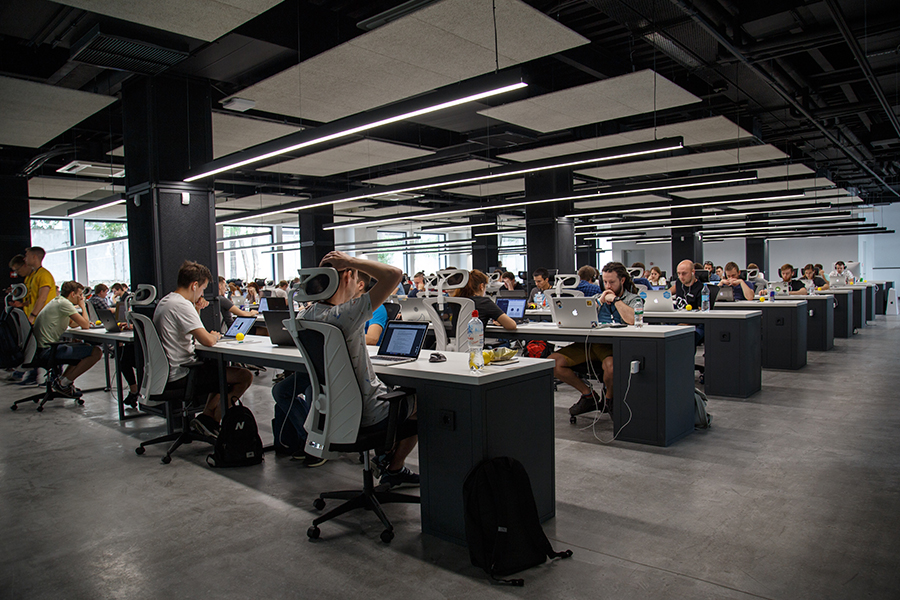“Organizations under pressure from more nimble startups must find ways to harness and direct employee ambitions to catalyze growth and future-proof.”
As venture capital continues to flow into growth markets, incumbent companies of all sizes will be forced to contend with increasing competition from fast-growing disruptors. Asian venture investments, for example, represented the bulk of global venture capital growth from 2016 to 2017 and are on track to account for over 40 percent of all VC investment in 2018, according to data from PitchBook. This influx in investment has fueled the emergence of unicorns across the region—from India’s Oyo Rooms and Big Basket to Southeast Asia’s Traveloka and Tokopedia to China’s Didi and Lu—threatening established firms in industries ranging from retail to hospitality to transportation to finance.
As in the United States, incumbent companies have responded to this boom in well-funded upstarts by making their own early stage investments. This corporate venture capital (CVC) leverages a critical, but often misallocated asset enjoyed by many large companies: cash. As of last year, per CB Insights, Asian companies accounted for over a dozen of the top 50 CVC firms and constituted nearly 30 percent of deals—up 8 percent from 2016. Yet, for some companies, wading into the VC landscape can seem complex and risky. CVC often forces executives to think differently about their growth strategy, hire consultants and investment bankers, and even question the viability of their business model and the nature of their marketplace.
Despite its popularity, CVC isn’t right for every company in every instance. Many companies often overlook the ideas and ambitions that already exist within their employee base. If the worldwide surge in side hustles tells us anything, it’s that workers’ current positions are not adequately fulfilling their financial and existential needs. According to a 2017 GoDaddy survey, for example, 77 percent of Filipinos, 54 percent of Singaporeans and 37 percent of Hong Kong residents have side hustles. Decision makers at companies under pressure from more nimble startups must find ways to harness and direct the excess ambition of employees to help catalyze growth and future-proof their organizations.
Accomplishing this requires cultivating a culture of innovation and intrapreneurship that can produce new ideas and new ventures. The strategy required to build this type of culture cannot be entirely organic, however. It has to be carefully designed and actively managed. This entails implementing systems and programs that encourage and incentivize employees to ideate, collaborate, experiment, and even dream—and then ensuring they can share in the upside if their idea is implemented, commercialized or spun off.
One way of approaching these types of programs is to borrow the criminal justice adage of means, motive and opportunity. In order to take action that’s mutually beneficial to the company and the employee, employees must have the means to act, the motive to act and the opportunity to act. What does this entail more specifically?
- Means — Providing the funding, knowledge, tools, and authority necessary for employees to conceive an idea, establish the right team, build the business case and develop and test the idea. This may mean creating an internal venture fund or pitch contest, holding intrapreneurship or design thinking workshops.
- Motive — Inspiring people to think beyond their immediate job function, incentivizing them to take risks within a predefined framework and allowing them to participate in any financial upside that may result from their work. This may mean giving employees a bonus for ideas that merit further investigation, ensuring they receive royalties for inventions or allowing them to retain an equity stake or leadership role in a subsidiary.
- Opportunity — Creating time and space for ideation and collaboration, enabling them to work on their internal side hustles in balance with their primary responsibilities. This may mean creating an internal startup incubator, setting aside time each day or week for intrapreneurial initiatives or providing essential workspace and equipment.
It’s not enough for companies to simply encourage employees to innovate from within. They have to implement programs and processes that give workers the means, motive and opportunity to do so. Beyond this, however, inculturating an intrapreneurial mindset requires that people at every level of an organization rethink the purpose of work and the parameters of the workplace. In decades past, it would be anathema for an employee to spend more time developing a new idea than fulfilling their primary function. Yet, in today’s environment, that new idea may end up creating exponentially more value than the employee’s day-to-day work product.
While a balance needs to be struck to maintain productivity and manage risk, it behoves leaders to begin rethinking how human capital should be deployed. Are your human resources more effectively used to sustain your core business so you can survive today or evolve your business so you can thrive tomorrow? The need to wrestle with these questions is especially acute in many growth markets where workplace norms and organizational structures skew traditional.
As the number of new entrants rises across growth markets, established companies are going to have to take proactive measures to stay relevant and competitive. While some have turned to corporate venture capital to gain upside exposure, CVC isn’t for everyone. In concert with a CVC strategy or in lieu of it, companies should look inward for innovation. Employees often prove to be ready and capable intrapreneurs in need of the means, motive and opportunity to develop their ideas. Not every company has to invest in startups to secure growth in changing markets. Forward-thinking companies will invest in the ideas and talent native to their organizations to unleash a startup culture that can help them grow from within.










